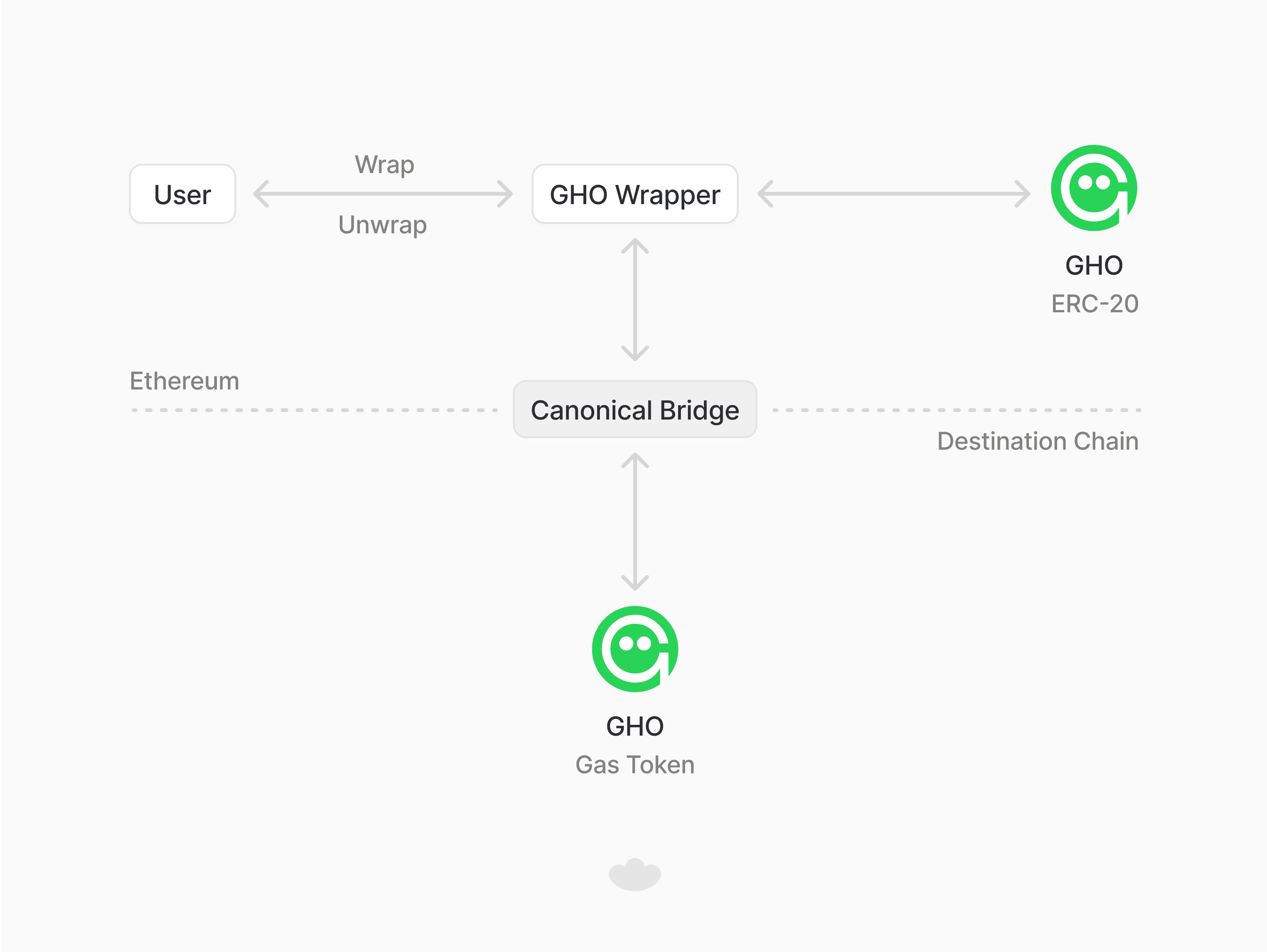GHO: Stablecoin as Gas on Lens Chain
Deploying GHO as the gas token for Lens Chain.

Lens is a high-performance blockchain stack built for SocialFi, combining modular Social Primitives, fast and cost-effective settlement secured by Ethereum, and decentralized storage.
The adoption of GHO as the native gas token within Lens Chain is driven by the need to establish predictable, stable, and cost-effective transaction fees. This approach aligns with Lens’s broader objective of fostering accessible, user-centric SocialFi applications at scale.
This post outlines the deployment of GHO as the gas token for Lens Chain, an implementation of the GHO Gas Token Framework proposed by Aave Labs.

Predictability, Stability and Accessibility: the Case for GHO on Lens Chain
Lens Chain is architected to achieve greater scale and lower fees than existing Layer 2 networks, setting a new benchmark for performance and cost-efficiency. This not only unlocks new consumer and developer use cases, but also bolsters the role of GHO as a reliable payment option, expanding its utility beyond DeFi into everyday social applications.
In this context, the selection of GHO as the gas token is both strategic and functional. Stablecoins, particularly decentralized ones like GHO, offer transparency and predictable value for financial agreements. The decentralized nature of GHO contributes to increasing resiliency on Lens Chain. The integration of GHO as the gas token of Lens Chain reduces exposure to the volatility typically associated with native cryptocurrencies, creating a consistent cost structure for developers and users alike. This design is optimized for real-time social experiences, where minimal and stable transaction costs are essential for continuous user engagement.
Lens Chain is a Validium built leveraging the ZKsync stack and Avail DA. Lens Labs has decided to use the canonical ZKSync Shared Bridge as the primary liquidity pool for GHO, based on the unique requirements of deploying GHO as a gas token rather than as a bridged ERC-20. This approach ties the security of GHO directly to the underlying network bridge, embedding it within Lens Chain’s core infrastructure.
While messaging protocols are generally designed to support ERC-20 transfers, deploying GHO as a gas token requires a custom implementation that integrates natively with the network. The ZKSync bridge provides a streamlined solution, embedding gas token functionality directly into the network’s primary liquidity bridge without introducing new attack surfaces or security assumptions.
Specification
GHO will be integrated as the gas token of Lens Chain by using the ZKSync Shared Bridge, which serves as the primary liquidity and security bridge of the chain. The ZKSync bridge will serve as the sole minter of GHO on Lens Chain, reducing the complexities associated with fragmented liquidity and minimizing security risks.
A GHO wrapper contract is deployed on Ethereum and will serve as the entry-point for bridging GHO with the ZKSync bridge to introduce flexibility for upgrades and extensions without modifying the core bridge infrastructure.
Transaction fees on Lens Chain will be denominated in GHO, with dynamic pricing informed by an onchain price feed that adjusts gas costs relative to Ethereum’s fee market. Cross-chain transactions will require users to cover gas fees in ETH on Ethereum and in GHO on Lens Chain. Developers may also implement custom Account Abstraction solutions to subsidize fees, enhancing onboarding for new users.
Conclusion
Integrating GHO as the gas token for Lens Chain strengthens the network’s usability and GHO’s role as a reliable payments option. With predictable, low-cost transactions and a high-performance design, Lens Chain sets a new standard for SocialFi and blockchain infrastructure—driving growth for Lens and GHO.